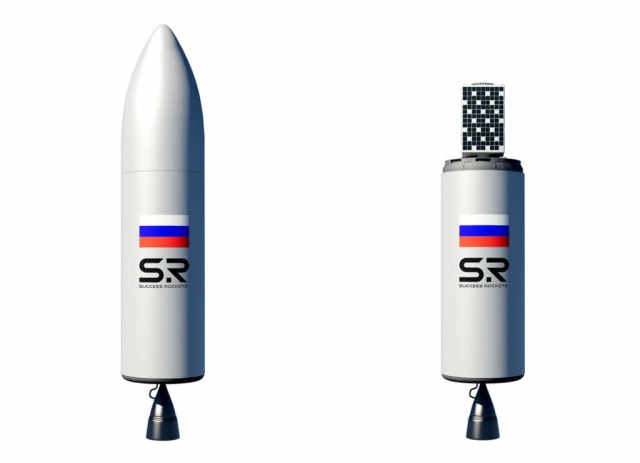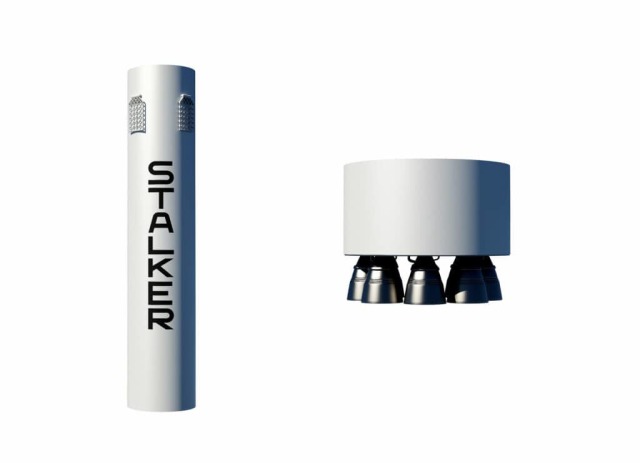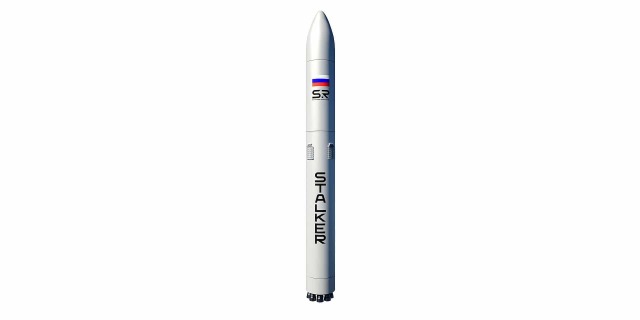The private space company Success Rockets has unveiled a brand new rocket under the long-announced name Stalker. This version looks much more serious and promising than the earlier version of the project. Moreover, in the process of creation, the changed geopolitical situation will be taken into account, and the first launch is scheduled for 2024.
Initially, the development of "Stalker" was planned with the participation of the South Korean company SEWON E &C. The parties signed a memorandum on the establishment of a joint venture in January, but the further progress of the project remained unknown. Now, according to the official Success Rockets press release, the light-class launch vehicleStalker has radically changed its appearance. In fact, only the name remains of the "old" version.
Instead of three solid—fuel stages, the rocket will receive two with engines running on a fuel pair of liquid oxygen - kerosene. The mass of the carrier has more than doubled, from 34 tons to 83.5 tons. The dimensions have grown accordingly: height — 33 meters (there were 17), diameter — 2.2 meters (there were 1.7). Instead of 250 kilograms of payload "new"Stalker will launch 700 kilograms into low Earth orbit (LEO) already.
The purpose of the carrier is still the same — the delivery of micro- and nanosatellites into space, only their number has increased. The characteristics of the cargo being launched into sun-synchronous orbits (SSO) are not entirely clear, which is important for this class of rockets. The "old" version was calculated for 150 kilograms without specifying the maximum height. And talking about the "new"Stalker, the company specifies only 700 kilometers as the "ceiling" for its carrier. It is not yet clear how many of the declared seven hundred kilograms will be able to be delivered to such a height.
It is noteworthy that Success Rockets, as a rule, reports strongly underestimated specifications of the "Stalker" relative to potential competitors. In other words, they look more than achievable for an inexperienced company. For comparison: Rocket Lab Electron outputs 300 kilograms (200 for the MTR) with its own weight of 13 tons — this looks extremely advantageous compared to the original versionStalker, even if we take into account that the American-New Zealand carrier is launched from a more advantageous launch pad (closer to the equator) and it burns oxygen with kerosene (which is more efficient than solid-fuel engines).

There will be two variants of the fairing: one of the same diameter as the second stage (2.2 meters), the other one is a meter larger. Its wings, as well as part of the structures of the entire rocket, will be made of carbon fiber composite of their own design. It took more than two years to create it, but now the company has a durable and inexpensive material of domestic production (no need to depend on foreign suppliers). The image on the left shows the second stage with a standard—sized head fairing, on the right — without it, the payload is shown
Image Source: Success Rockets
If we consider the "new"Stalker, now there are no comparable cryogenic propellant rockets on the launch services market. At the turn of the century, the Celestial Empire launched Changzheng 1D (CZ-1D) with similar characteristics three times (750-930 kilograms per LEO, the total mass of the carrier is 81 tons), but it used asymmetric dimethylhydrazine as fuel and nitrogen tetraoxide as an oxidizer.
Engines running on this fuel pair are easier to create, but have less efficiency than kerosene-oxygen ones. There is "Changzheng-11" (CZ-11), but here the situation is even more interesting than in the case of comparing the "first"Stalker with Electron rocket: the Chinese carrier is solid—fuel, while 20 tons lighter than the updated brainchild of Success Rockets (outputs the same 700 kilograms on the LEO).
Perhaps such modest applications serve both to increase the probability of test success and as a potential reserve for improving performance in the future. While calculating "on the fingers" energyStalker looks very modest. In order not to delve into the formulas, we note that modern carriers output two to four percent of their starting mass to LEO. The final percentage depends on the efficiency of the engines, the choice of fuel pair, the distance of the starting position from the equator, the size of the rocket (bigger is better) and the specifics of a particular mission.

The presence of aerodynamic rudders on the first stage is not accidental — the Stalker is being developed "with an eye" to landing for reuse. Given the requirement of potential reusability, the creation of a new LE-11 engine in such a limited time looks even less realistic. The image on the left shows the upper part of the first stage, on the right — a close—up of the lower part with nine LE-11 engines
Image Source: Success Rockets
Naturally, since "new"Stalker switched to a different type of rocket fuel, had to create engines from scratch. It is called LE11 (Lucky Engine-11), built according to an open cycle scheme and develops 11.4 tons of thrust at the Earth's surface. The main measure of the efficiency of a rocket engine is the specific impulse, which the LE11 has at the level between outdated designs and modern ones. Namely 271 seconds (at sea level): which is higher than the RD-107A (263 seconds), which propel the Soyuz family rockets, but lower than the Merlin 1B (282 seconds) from SpaceX Falcon 9 and RD-170-based engines (about 309 seconds).
The first stage will be equipped with nine Lucky Engine-11, the second with one, but modified to work in a vacuum. This version, by the way, will be a little more powerful: it will have to develop 13 tons of thrust.
Recall that Success Rockets is a young Russian startup, which will only turn two years old in July 2022. The company's plans are quite ambitious,Stalker should take off in a couple of years. At the same time, solid-fuel geofic Nebo rockets are being developed. And not only on paper: last December, the first launch tests of a carrier with an index of 25 were carried out. And during this year, the first space launch to an altitude of more than 100 kilometers should take place (nevertheless, it will not be orbital, rockets of this class are rarely able to give sufficient speed to the payload).

